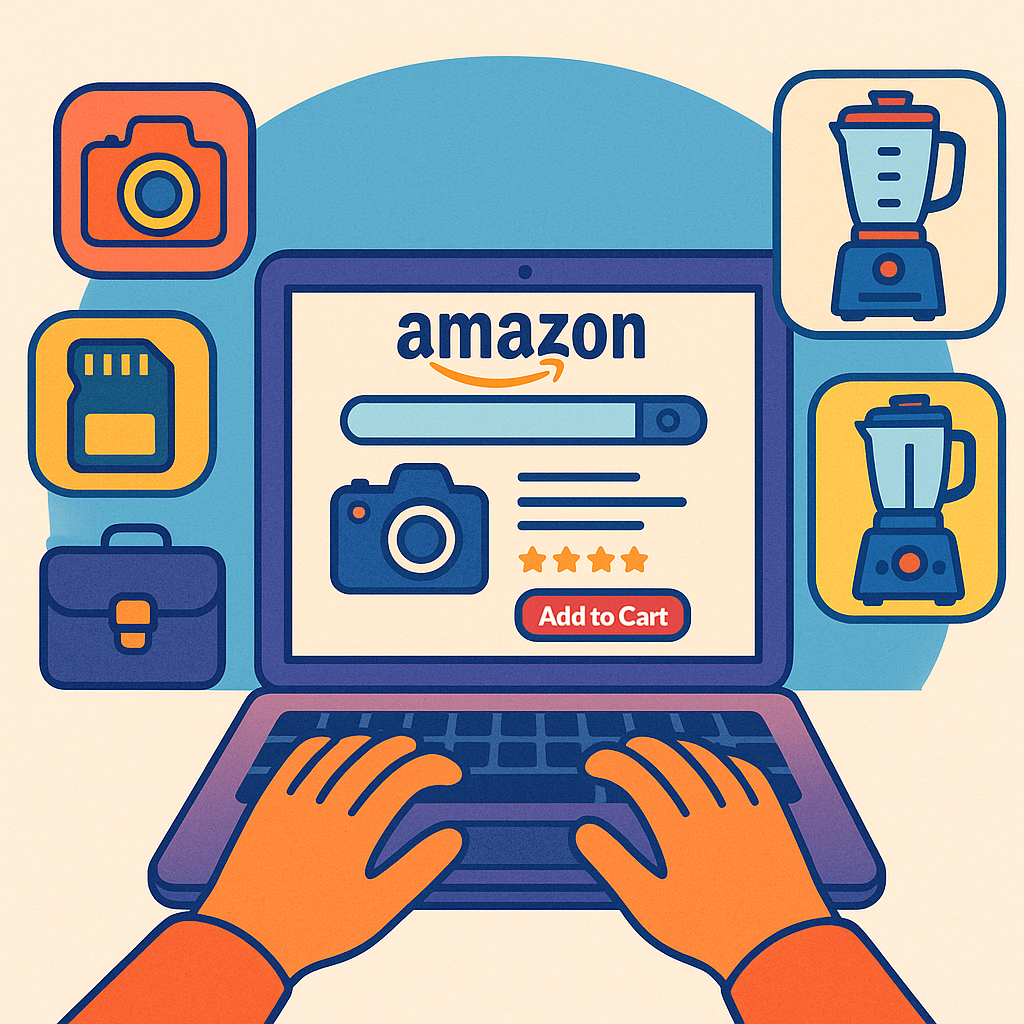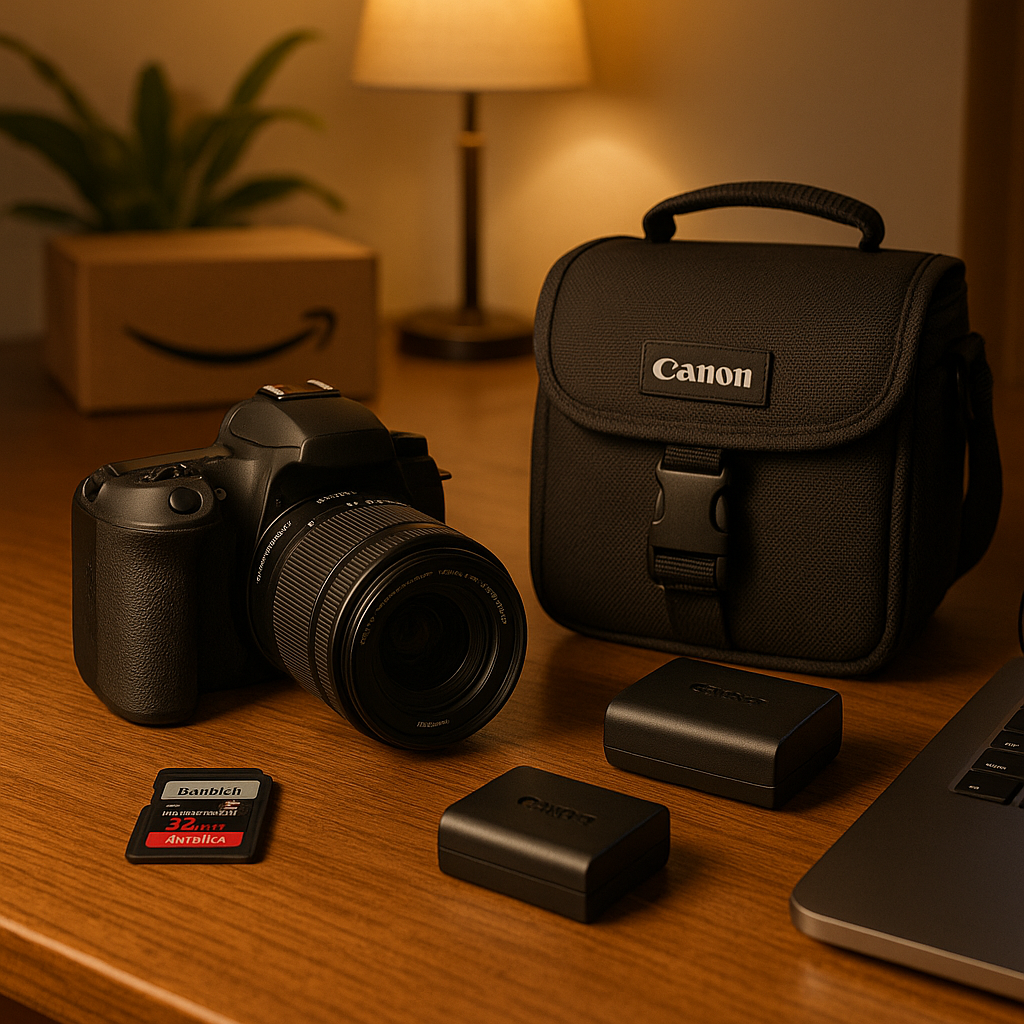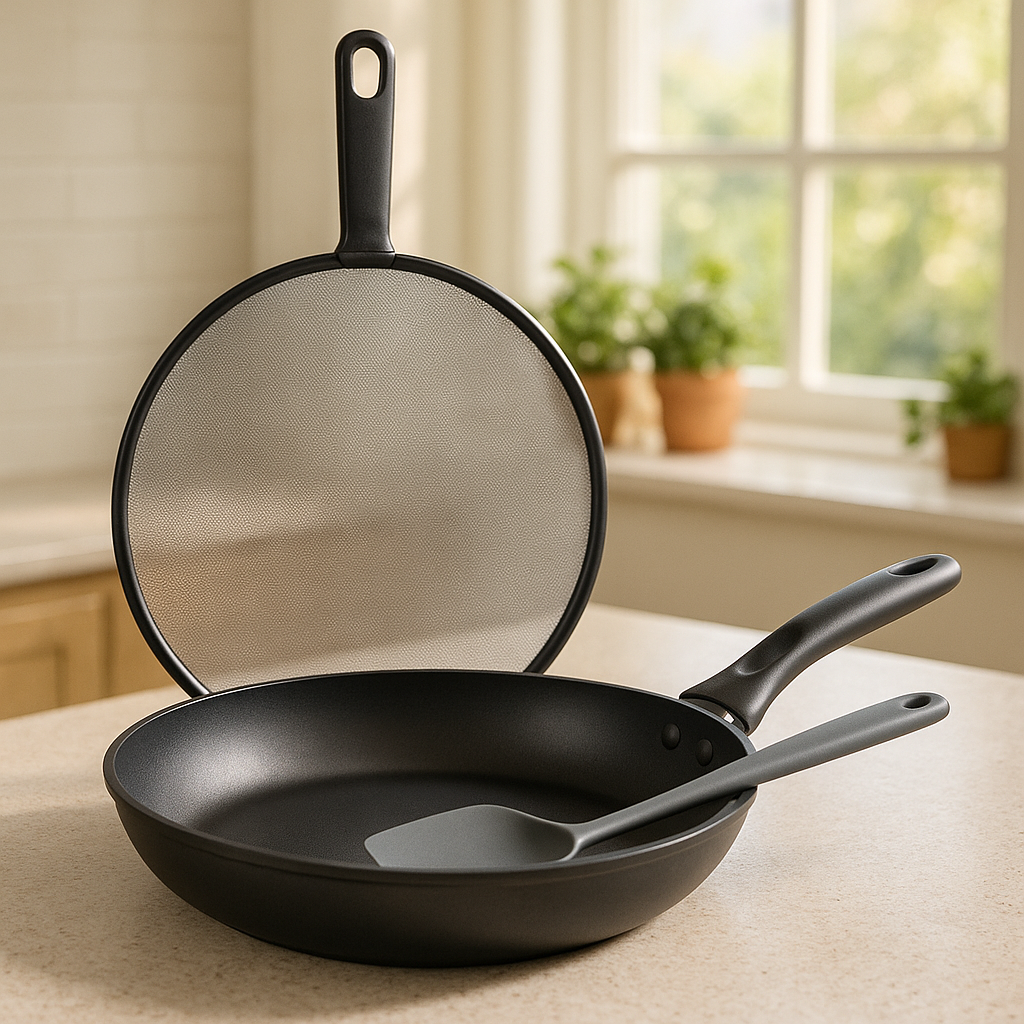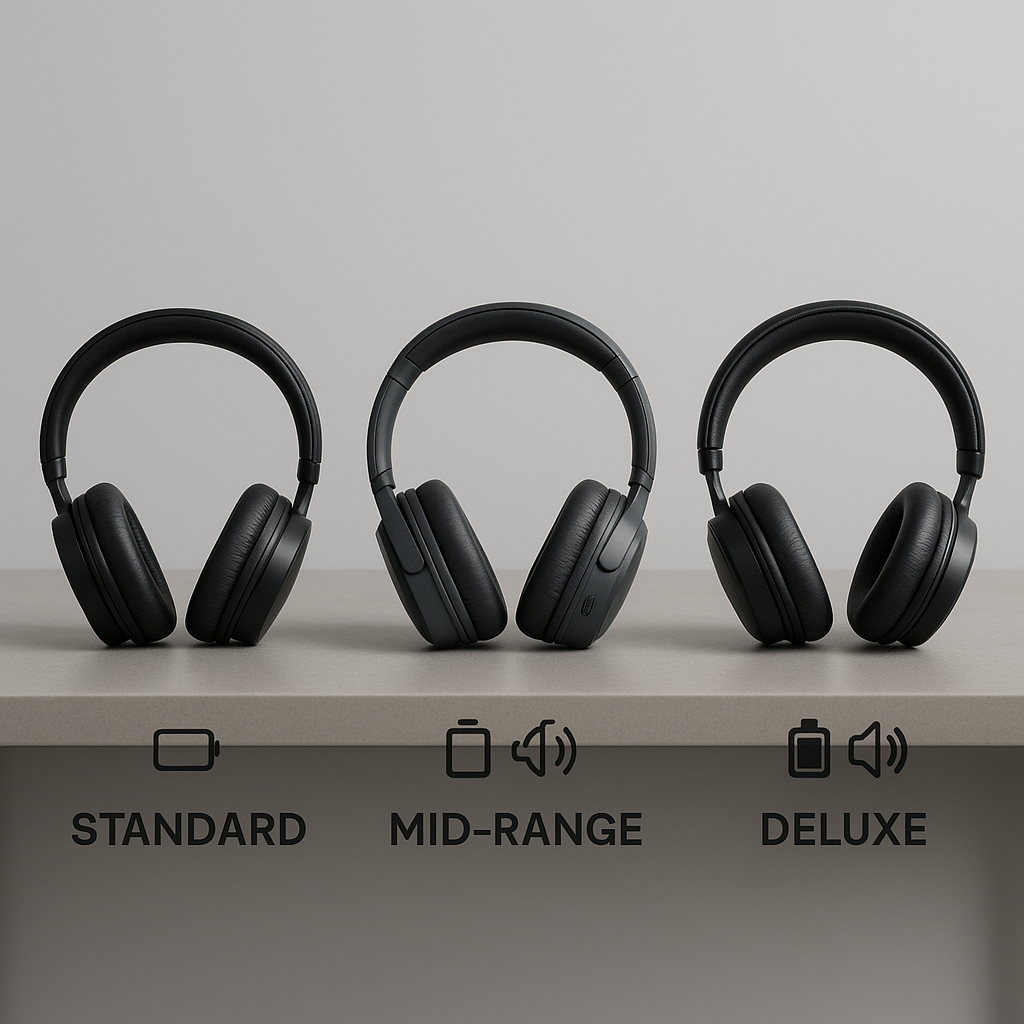How to Cross-Sell and Upsell on Amazon (With Real Examples)
In the competitive Amazon marketplace, simply listing products is no longer enough to maximize your revenue potential. Smart sellers are leveraging cross-selling and upselling techniques to increase average order value, boost customer lifetime value, and improve profitability without incurring additional acquisition costs.
According to recent data, up to 35% of Amazon’s revenue comes from its recommendation engine, which primarily focuses on cross-selling and upselling opportunities. For sellers, this represents a significant opportunity to grow your business by strategically positioning complementary or premium products.
In this comprehensive guide, you’ll discover actionable strategies for implementing effective cross-selling and upselling techniques on Amazon, complete with real-world examples and step-by-step instructions. Whether you’re a beginner or intermediate seller, these tactics will help you optimize your product offerings and increase your bottom line.
Understanding cross-selling vs. upselling on Amazon
Before diving into specific strategies, it’s important to understand the fundamental difference between cross-selling and upselling in the Amazon ecosystem.
Cross-selling involves suggesting complementary products that enhance or work alongside a customer’s primary purchase. On Amazon, this typically appears as “Frequently Bought Together” or “Customers Also Bought” sections on product pages. For example, when a customer views a digital camera, Amazon might suggest a memory card, camera bag, or extra battery—items that complement and enhance the original purchase.
Upselling, on the other hand, encourages customers to purchase a higher-priced or premium version of the product they’re considering. This might appear as a product comparison chart showing different models with additional features or as a “Consider these alternatives” section highlighting premium versions. For instance, a customer looking at a basic blender might be shown a professional-grade model with more features and higher power.
| Cross-Selling | Upselling |
|---|---|
| Suggests complementary products | Promotes premium versions of the same product |
| Example: Camera + memory card + tripod | Example: Basic camera vs. professional model |
| Appears in “Frequently Bought Together” | Often shown in comparison charts or “premium alternatives” |
| Goal: Increase items per order | Goal: Increase average value per item |
These techniques appear throughout the Amazon shopping journey—on product pages, in search results via Sponsored Products, during checkout, and even post-purchase in follow-up emails. Understanding where and how they work is essential for implementing them effectively in your selling strategy.
The business benefits of cross-selling and upselling on Amazon
Implementing strategic cross-selling and upselling tactics delivers multiple advantages for Amazon sellers looking to grow their business efficiently.
The most immediate benefit is an increase in average order value (AOV). When customers add complementary products to their purchase or upgrade to premium versions, they spend more per transaction. This directly impacts your bottom line without requiring additional marketing spend to acquire new customers.
Beyond the immediate revenue boost, these techniques significantly enhance customer lifetime value on Amazon. By introducing shoppers to more of your product catalog and delivering a more complete solution to their needs, you establish stronger brand recognition and loyalty. Customers who purchase multiple products from your brand are more likely to return for future purchases.
Cross-selling and upselling also contribute to improved inventory management. By strategically promoting certain products, you can balance inventory levels across your catalog, preventing overstock situations while ensuring faster turnover of your merchandise.
From an efficiency standpoint, these strategies offer exceptional ROI compared to customer acquisition. Research consistently shows that selling to existing customers (through cross-sells and upsells) is 5-25 times less expensive than acquiring new customers. On Amazon’s competitive platform, this efficiency can be the difference between profitable growth and stagnation.
To maximize these benefits, sellers should closely monitor key metrics in Seller Central, including:
- Conversion rate for bundled products
- Average order value
- Attachment rate (how often complementary products are purchased together)
- Customer repeat purchase rate
- Revenue per customer
By tracking these metrics, you can continuously refine your approach and maximize the impact of your cross-selling and upselling efforts.
High-impact cross-selling and upselling strategies on Amazon
Now that you understand the benefits of these techniques, let’s explore specific, actionable strategies you can implement on Amazon to boost your sales and customer value.
Leverage Amazon’s built-in recommendation widgets
Amazon’s recommendation engine does much of the heavy lifting for sellers through various widgets that appear on product pages. While you don’t have direct control over these placements, you can optimize your listings to increase the chances of your products appearing in these valuable recommendation spots.
The most prominent of these is the “Frequently Bought Together” section, which typically appears directly below the product information on a listing page. This widget automatically suggests complementary products based on customer purchasing patterns. To increase your chances of appearing here:
- Ensure your product categorization is accurate and detailed
- Use consistent and specific keywords across related products
- Create logical product families with clear relationships
- Monitor which products naturally appear together and strengthen those connections through optimized listings
The “Customers Who Bought This Item Also Bought” carousel shows additional products that customers frequently purchase alongside the viewed item. This section provides excellent cross-selling opportunities, especially for consumables or accessories. Similar optimization techniques apply here—focus on clear categorization and relationship-building through keywords and product descriptions.
For these built-in widgets to work effectively, you need sufficient sales volume to generate meaningful data patterns. Focus on driving initial sales through other channels if necessary to build the purchase history that powers Amazon’s recommendation algorithms.
Utilize Amazon virtual bundles & product sets
Amazon Virtual Bundles provide a powerful, platform-native way to cross-sell products without the logistical hassle of physical bundling. This feature allows FBA sellers enrolled in Brand Registry to create virtual product bundles consisting of 2-5 complementary items that are all fulfilled by Amazon.
To create a Virtual Bundle:
- Log into Seller Central and navigate to the “Virtual Bundles” section
- Select eligible products (must be FBA items from your catalog)
- Create a bundle title, images, and description
- Set a competitive bundle price (typically offering a small discount compared to buying items separately)
- Submit for approval
Virtual Bundles appear as standalone product listings, complete with their own ASINs, but don’t require separate inventory or packaging. When a customer purchases a bundle, Amazon pulls the individual items from your FBA inventory and ships them together.
The best Virtual Bundles follow a logical product relationship. For example, a cookware brand might bundle a sauté pan with a spatula and lid, or a tech accessory seller could create a smartphone starter kit with a case, screen protector, and charging cable.
When creating bundles, consider these best practices:
- Keep the total bundle price reasonable—ideally no more than 2-3 times the cost of the primary item
- Create clear value (a modest 5-15% discount works well)
- Use high-quality bundle images that show all included items
- Write descriptive titles that clearly communicate the bundle contents
Virtual Bundles are particularly effective for increasing average order value while providing genuine customer convenience—a win-win approach to cross-selling.
Optimize A+ content for complementary product suggestions
For brand-registered sellers, A+ Content (formerly Enhanced Brand Content) offers valuable real estate for strategic cross-selling and upselling directly within your product listings. This enhanced content area allows you to create visually appealing product comparisons, feature related items, and showcase your broader product catalog.
To effectively use A+ Content for cross-selling and upselling:
Create comparison charts: Develop side-by-side comparisons of good/better/best product options within your line. Highlight the additional features or benefits of premium models to encourage upsells. For example, a vacuum manufacturer might compare their standard, deluxe, and premium models, emphasizing the additional attachments and stronger suction in higher-tier options.
Include “complete the set” modules: Showcase complementary products that work with the primary item. A cookware seller might feature their matching lids, utensils, or specialty pans that complement the product being viewed.
Use lifestyle imagery: Show products being used together in real-life scenarios. This subtle visual cross-selling helps customers envision how multiple products from your line work as a cohesive solution.
Create product family storytelling: Use A+ Content to tell a broader story about your product ecosystem and how various items work together to create a complete experience.
The key to successful A+ Content cross-selling is relevance and visual appeal. Focus on creating genuinely useful product relationships rather than forcing unrelated items together. High-quality imagery, clear comparison charts, and concise copy that emphasizes benefits (not just features) will drive the best results.
Personalize offers with Sponsored Products and display ads
Amazon’s advertising platform provides sophisticated tools for delivering targeted cross-sell and upsell offers to specific customer segments. Through careful campaign structure and targeting options, you can place complementary products in front of highly relevant audiences.
Product Attribute Targeting (PAT) is particularly powerful for cross-selling. This feature allows you to display your Sponsored Product ads on specific competitor or complementary product pages. For example:
- A smartphone case manufacturer can target specific phone model listings
- A lens filter company can target specific camera model pages
- A specialty coffee brand can target electric coffee grinder listings
To implement an effective PAT strategy:
- Identify high-traffic product pages where your complementary products would be relevant
- Create specific Sponsored Product campaigns with PAT targeting
- Set appropriate bids based on the potential lifetime value of customers
- Develop ad copy that emphasizes the complementary nature of your product
- Monitor performance and adjust targeting based on conversion data
For upselling, consider using Sponsored Brand and Sponsored Display ads to showcase your premium product line to customers viewing entry-level options. Create messaging that highlights the additional features and benefits of your higher-tier products.
Customer segmentation further enhances these efforts. Amazon’s advertising platform allows targeting based on shopping behavior (like previous brand interactions or Prime membership), enabling you to tailor your approach to different customer types. For instance, you might show premium product upsells to repeat customers who have already purchased your entry-level items.
Strategic use of promotions, coupons, and dynamic pricing
Strategic promotions and pricing tactics can significantly boost cross-sell and upsell success rates on Amazon. These financial incentives help overcome customer hesitation and create compelling reasons to add more items to their cart.
For cross-selling, consider implementing tiered promotions that reward customers for purchasing multiple items from your catalog. Options include:
- “Buy one, get one at X% off” promotions for complementary products
- “Spend $X, save $Y” thresholds that encourage adding additional items
- Bundle discounts that automatically apply when certain product combinations are added to cart
For these cross-sell promotions to be effective, follow the “25% rule”—the add-on item should generally not exceed 25% of the primary product’s price. This makes the additional purchase feel like a reasonable increment rather than a major commitment.
For upselling, psychological pricing techniques can be particularly effective:
- Create “good-better-best” pricing tiers with strategic price gaps
- Use time-limited premium product discounts to create urgency
- Implement percentage-based discounts on higher-tier products that make the upgrade seem more valuable
Amazon Coupons and Prime Exclusive Discounts can both be configured to support these strategies. By making coupons visible on search results and product pages, you create attention-grabbing incentives for customers to explore additional products in your line.
Dynamic pricing tools allow you to adjust these strategies based on seasonality, inventory levels, and competitive positioning. During peak selling periods, you might emphasize bundles to maximize AOV, while during slower periods, more aggressive cross-sell discounts might drive additional revenue.
Optimize placement: cart and thank-you page cross-sells
While Amazon limits third-party seller control over the checkout experience, several opportunities exist to present cross-sells during and after the purchase process.
The shopping cart page features an “Items you might like” section that often displays complementary products based on cart contents. While you can’t directly control this placement, you can increase your chances of appearing by:
- Ensuring strong category and subcategory alignment across your product catalog
- Optimizing product titles and bullets to clearly signal complementary relationships
- Building sales history of items commonly purchased together
Post-purchase communications offer another valuable cross-selling opportunity. Amazon allows certain messaging through Buyer-Seller Messaging, though with strict limitations. When communicating about order status or delivery, you can include subtle references to complementary products or product care that might lead to additional purchases.
For brands enrolled in Amazon Posts (still in beta), you can create shoppable content that appears on product detail pages, including your own. This social media-like feature allows you to showcase complementary products in an organic, content-driven format.
Additionally, consider using product inserts (within Amazon’s terms of service) that highlight your broader product catalog and the benefits of complementary items. These physical reminders can drive customers back to Amazon to complete their product set.
Advanced tips—A/B testing and continuous optimization
The most successful Amazon sellers treat cross-selling and upselling as continuous experiments rather than one-time implementations. Systematic testing and optimization are essential for maximizing results over time.
A/B testing different approaches helps identify the most effective strategies for your specific products and customer base. Consider testing variables such as:
- Different virtual bundle combinations and price points
- Various A+ Content layouts and comparison charts
- Different promotional thresholds and discount structures
- Alternative product targeting for Sponsored Products campaigns
Amazon’s Seller Central provides valuable data to inform these tests. Pay particular attention to:
- Conversion rates for different product combinations
- Click-through rates on A+ Content modules
- Performance metrics for virtual bundles compared to standalone products
- Attachment rates for frequently bought together items
Segment your analysis by product category, price point, and customer type to identify patterns and opportunities. For instance, you might discover that cross-selling works better for lower-priced items while upselling is more effective for premium products.
Regular competitive analysis is also crucial. Monitor how top sellers in your category implement these strategies and look for opportunities to differentiate or improve upon their approaches. Amazon is a dynamic marketplace, and staying ahead requires constant vigilance and adaptation.
Ready to scale your cross-selling efforts? Our agency specializes in Amazon bundle strategy—contact us for a customized audit.
Real-world examples of cross-selling and upselling on Amazon
To better understand these strategies in action, let’s examine several real-world examples from successful Amazon sellers who have effectively implemented cross-selling and upselling techniques.
Example 1: Frequently bought together—camera accessories
A leading camera brand maximizes their average order value through strategic “Frequently Bought Together” placements. When customers view their entry-level DSLR camera, Amazon’s algorithm suggests a branded memory card, camera bag, and extra battery—all produced by the same manufacturer.
The success of this approach comes from several factors:
- The accessories are genuinely useful and enhance the camera experience
- Each accessory is priced between 15-25% of the primary product cost
- The total bundle represents a complete solution for new photographers
- The combined price still falls within the typical budget range for entry-level photographers
By optimizing their product listings with consistent keywords and category assignments, this brand has strengthened the algorithmic connection between their camera bodies and accessories. The result is a 47% attachment rate for at least one accessory with camera purchases, significantly boosting overall revenue.
Example 2: Virtual bundles—kitchen essentials
A cookware brand uses Amazon Virtual Bundles to create logical product sets that solve specific customer needs. Their most successful bundle combines a 10-inch skillet, a silicone spatula, and a splatter guard—creating a “Perfect Frying Pan Set.”
The bundle strategy works because:
- It solves a complete cooking need rather than just providing a single tool
- The bundle price offers a 12% discount compared to buying items separately
- The bundle listing features lifestyle photography showing all items being used together
- The bundle appears in search results for various cooking-related queries
This approach has generated a 28% increase in revenue compared to selling these items individually, while also improving their overall search visibility through the additional bundle listing.
Example 3: A+ Content upselling—premium headphones
An audio equipment manufacturer effectively uses A+ Content to upsell customers from their mid-range to premium headphone models. Their standard model product page includes a comparison chart showing three headphone tiers with clearly highlighted feature differences.
The comparison emphasizes premium features like:
- Extended battery life (20 hours vs. 30 hours vs. 40 hours)
- Enhanced noise cancellation technology (basic vs. advanced vs. adaptive)
- Additional convenience features (fast charging, multi-device pairing)
- Premium materials and extended warranty coverage
By visually highlighting these differences and including direct links to the premium models, the brand has achieved a 15% click-through rate to higher-tier products from their standard model pages, with a 7% conversion rate on those clicks—effectively moving customers up their product line.
Example 4: Post-purchase cross-selling—fitness equipment
A fitness equipment company employs a comprehensive post-purchase cross-selling strategy. When customers purchase their resistance bands, they receive an order confirmation email that subtly highlights their complementary fitness accessories.
The email maintains its primary focus on order confirmation but includes a section titled “Complete Your Workout Kit” featuring their most popular exercise mat, fitness tracker integration, and workout guide. Each suggestion is accompanied by a clear benefit statement explaining how it enhances the resistance band experience.
This approach has driven a 22% return rate among new customers within 30 days of their initial purchase, significantly increasing customer lifetime value while providing genuinely useful product recommendations.
Best practices and pitfalls to avoid in Amazon cross-selling and upselling
To maximize the effectiveness of your cross-selling and upselling efforts while avoiding common mistakes, follow these proven best practices and watch out for potential pitfalls.
Best practices
- Maintain strict relevance: Only suggest products that genuinely complement or enhance the original purchase. Irrelevant suggestions damage customer trust and hurt conversion rates.
- Follow the 25% rule for cross-sells: Complementary products should generally not exceed 25% of the primary product’s price to maintain a reasonable perceived value.
- Limit options: Avoid overwhelming customers with too many choices. For cross-sells, limit suggestions to 2-3 highly relevant items; for upsells, focus on a clear good-better-best structure.
- Emphasize benefits, not features: Explain how additional or premium products solve problems or enhance the customer experience, not just what technical specifications they offer.
- Create genuine value in bundles: Offer modest discounts (5-15%) on bundles compared to individual purchases to provide real financial incentive.
- Use quality visuals: Invest in professional photography showing products being used together to help customers visualize the complete solution.
- Monitor inventory levels: Ensure consistent availability of complementary products to avoid frustrating customers who want to complete a set.
Pitfalls to avoid
- Cannibalizing premium sales: Be careful not to make bundles so attractive that they prevent customers from purchasing your higher-margin premium products.
- Forced relevance: Don’t try to cross-sell products with weak logical connections just to increase order value—it undermines customer trust.
- Neglecting price sensitivity: Even relevant cross-sells will fail if they push the total purchase significantly beyond the customer’s intended budget.
- Ignoring data: Failing to track performance metrics and adjust your strategy based on actual customer behavior.
- Violating Amazon policies: Ensure all cross-selling and upselling tactics comply with Amazon’s terms of service, particularly regarding customer communication and product bundling.
- Over-optimizing for short-term gains: Aggressive upselling may boost immediate revenue but harm long-term customer relationships and repeat purchase rates.
- Inconsistent inventory management: Promoting cross-sells that frequently go out of stock creates a frustrating customer experience.
Remember that cross-selling and upselling strategies should ultimately serve the customer by providing more complete solutions to their needs. When implemented with this mindset, these techniques build stronger customer relationships while increasing your revenue—a true win-win approach to Amazon selling.
Conclusion
Effective cross-selling and upselling strategies represent one of the most powerful opportunities for Amazon sellers to increase revenue without additional customer acquisition costs. By implementing the techniques outlined in this guide—from leveraging Amazon’s built-in recommendation widgets to creating virtual bundles and optimizing A+ Content—you can significantly boost your average order value and customer lifetime value.
The most successful cross-selling and upselling approaches focus on creating genuine customer value through relevant product suggestions, logical bundles, and clear communication of benefits. By maintaining this customer-centric focus while systematically testing and optimizing your strategies, you’ll develop a sustainable competitive advantage in the Amazon marketplace.
Start by implementing one or two strategies from this guide, measure your results, and gradually expand your approach as you gather data and insights. Remember that cross-selling and upselling are ongoing processes that require continuous refinement rather than one-time implementations.
With strategic execution and consistent optimization, these techniques will become core drivers of profitability for your Amazon business, helping you maximize the value of every customer interaction and build stronger, more sustainable relationships with your audience.
Frequently Asked Questions
What is the difference between cross-selling and upselling on Amazon?
Cross-selling suggests complementary products that enhance the customer’s primary purchase (like a camera lens for a camera), while upselling encourages customers to purchase a higher-priced or premium version of the product they’re considering (like a professional camera instead of an entry-level model).
What is the best time to present a cross-sell on Amazon?
The most effective times to present cross-sells on Amazon are directly on the product detail page (via “Frequently Bought Together”), during the shopping cart review, and in post-purchase communications such as order confirmation emails or package inserts that direct customers back to related products.
What makes an effective Amazon cross-sell offer?
An effective Amazon cross-sell offer features genuine product relevance to the primary purchase, maintains a reasonable price point (typically not exceeding 25% of the base product’s price), provides clear value through solving related customer needs, and limits options to prevent choice paralysis.
How do Amazon Virtual Bundles work?
Amazon Virtual Bundles allow brand-registered FBA sellers to create product bundles consisting of 2-5 complementary items without physically packaging them together. Each bundle receives its own ASIN and listing, and when purchased, Amazon picks the individual products from your inventory and ships them together, simplifying logistics while increasing average order value.
How can I measure the success of my cross-sell/upsell strategies?
Track key metrics in Amazon Seller Central including conversion rates for bundled products, average order value before and after implementing strategies, attachment rate (percentage of primary product sales that include suggested complementary items), customer repeat purchase rates, and total revenue per customer to measure cross-selling and upselling effectiveness.
